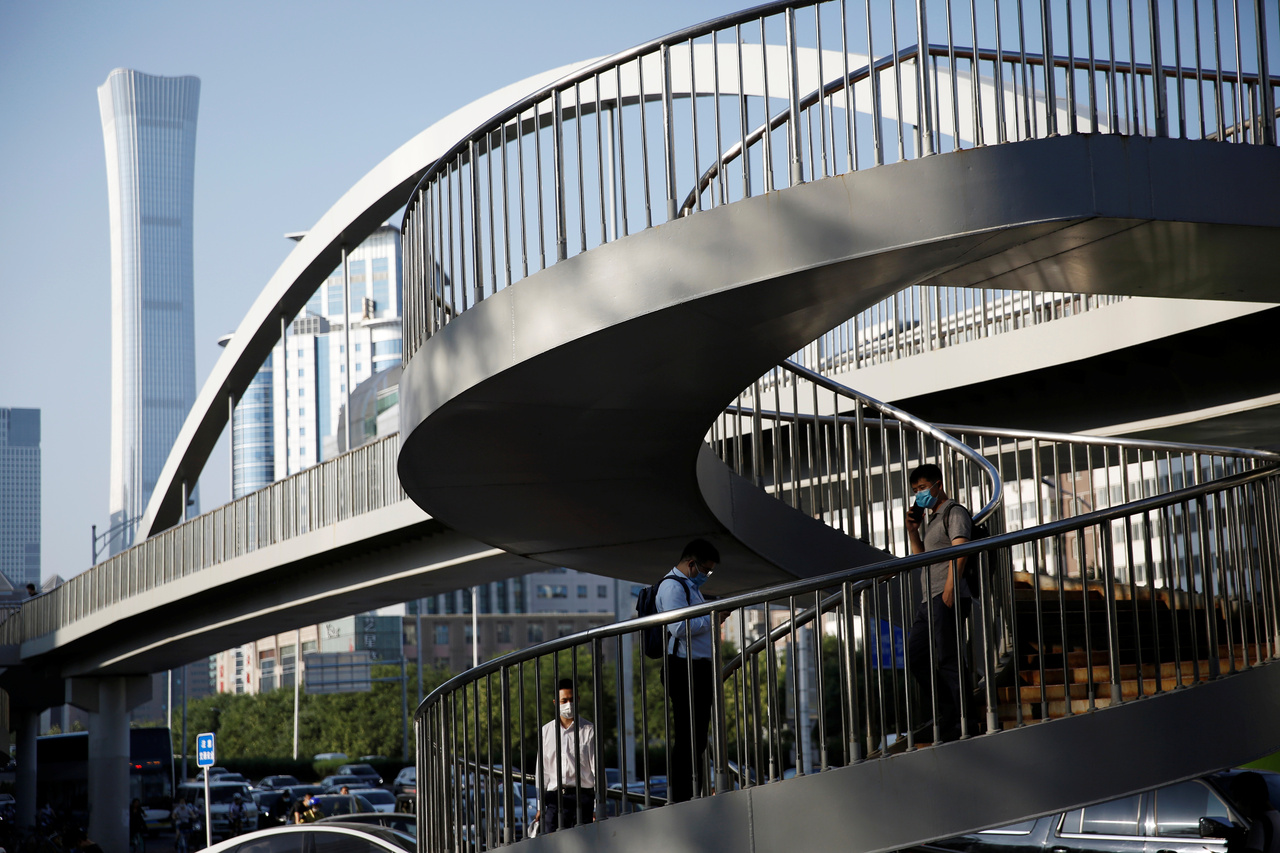China’s economy rebounds after steep slump, but US tensions, weak consumption raise challenges
Sign up now: Get insights on Asia's fast-moving developments

China's economy fell 1.6 per cent in the first six months from a year earlier.
PHOTO: REUTERS
Follow topic:
BEIJING (REUTERS) - China’s economy returned to growth in the second quarter after a deep slump at the start of the year, but domestic consumption and investment remained weak as the shock from the coronavirus crisis underscored the need for more policy support to bolster the recovery.
Asian share markets fell, partly reflecting the broad challenges facing the world’s second-largest economy as it tries to regain its footing and deal with heightened tensions with the United States on trade, technology and geopolitics.
Gross domestic product (GDP) rose 3.2 per cent in the second-quarter from a year earlier, the National Bureau of Statistics said on Thursday (July 16), faster than the 2.5 per cent forecast by analysts in a Reuters poll, but it is still the weakest expansion on record.
The bounce followed a steep 6.8 per cent slump in the first quarter, the first such contraction since at least 1992 when quarterly GDP records began.
The GDP numbers are being closely watched around the world, especially as many countries continue to grapple with the Covid-19 pandemic even as China has largely managed to contain the outbreak and has begun to restart its economic engines.
“While in general it’s fair to say that the numbers beat expectations, what the numbers also reveal is that we’re seeing that the China consumer remains behind in terms of the recovery story,” said Mr Rodrigo Catril, a foreign exchange strategist at NAB in Sydney.
“It’s very much a story of government stimulus-led recovery, which is very much focused on the industrial side. The consumer remains very cautious. That cautiousness is something the market is looking at in terms of countries where the consumer plays a bigger role, so that’s obviously relevant for the US as well.”
MORE SUPPORT NEEDED
The economy contracted 1.6 per cent in the first six months from a year earlier, the data showed, underscoring the sweeping impact of the health crisis.
On a quarter-on-quarter basis, GDP jumped 11.5 per cent in April-June, the National Bureau of Statistics said, compared with expectations for a 9.6 per cent rise and a 10 per cent decline in the previous quarter.
“We have confidence that the economy will continue to recover in the second half,” statistics bureau spokesman Liu Aihua told reporters.
Authorities are widely expected to maintain policy support in the second half to bolster the revival.
The government has rolled out a raft of measures, including more fiscal spending, tax relief and cuts in lending rates and banks’ reserve requirements to revive the coronavirus-ravaged economy and support employment.
But debt worries have kept a leash on China’s stimulus tap.
Net fiscal stimulus unveiled so this year amounted to just over 4 trillion yuan (S$795 billion), much restrained compared the spending burst in other major economies including the United States and Japan.
The Institute of International Finance estimates China’s total debt rose to 317 per cent of gross domestic product in the first quarter of 2020, up from 300 per cent in late 2019 and the largest quarterly increase on record.
The industrial economy offered some hope for the nation as it tries to regain its footing, with output in the vast sector rising 4.8 per cent in June from a year earlier, the third straight month of growth, the data showed, quickening from a 4.4 per cent rise in May.
Fixed asset investment fell a less-than-expected 3.1 per cent in the first half of the year from the same period in 2019, moderating from a 6.3 per cent decline in the first five months of the year.
Real estate investment growth quickened to 8.5 per cent in June from 8.1 per cent in May, while the annual drop in infrastructure investment also eased in the first half due to fiscal stimulus.
Some analysts, however, cautioned about the outlook due to the resurgence of coronavirus cases around the world.
“While the economic reopening of many advanced economies has offered Chinese exporters a reprieve, the resurgence of Covid-19 infections in some countries raises serious questions about whether the recent recovery in exports can be sustained,” said Boyang Xue, China analyst at DuckerFrontier in Singapore.

